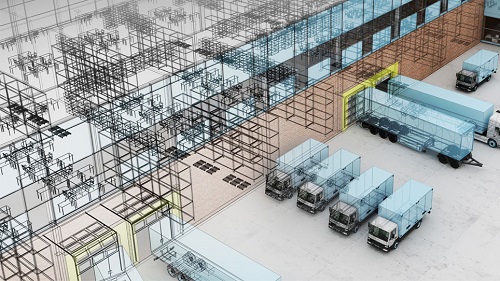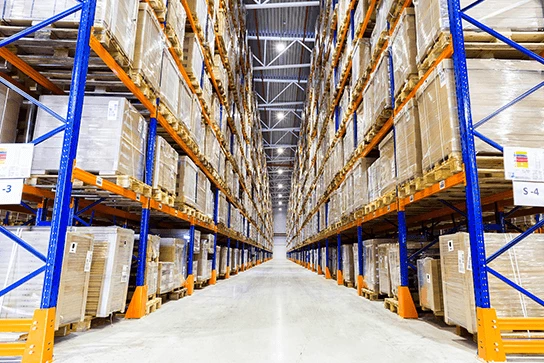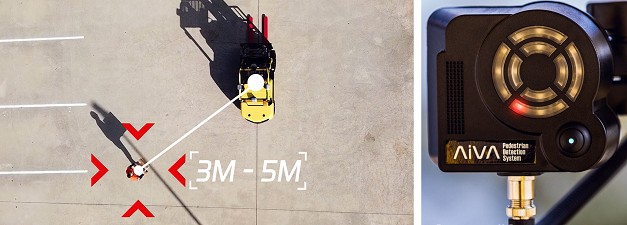5 Steps to Effective Warehouse Design: How to Optimise Your Operations
In Australia, the logistics industry is a significant contributor to the economy, employing over 1.2 million people and generating revenue of $131 billion in 2019-2020 alone (Logistics Association of Australia, 2021).
Warehouse design is a critical factor in ensuring the efficiency and productivity of logistics operations, and a well-designed warehouse can have a significant impact on a company’s bottom line.
In this post we briefly examine five steps to effective warehouse design that can help optimise operations.
1. Evaluate the Existing Warehouse Layout
The first step to effective warehouse design is to evaluate the current layout and identify its strengths and weaknesses.
An in-depth layout evaluation should consider factors such as product flow, storage capacity, worker productivity, and safety.
An evaluation can help businesses identify potential areas for improvement and determine whether a potentially costly full redesign is necessary or if implementing minor changes and improvements will deliver the desired improvements (Supply Chain Digital, 2021).
2. Create a Warehouse Design Plan
The next step is to create a warehouse design plan based on a detailed analysis of the product flow, storage requirements, and equipment needed for efficient warehouse operations.
The design plan should be based on the principles of maximising storage space, minimising product handling, and reducing the distance travelled by workers and equipment (Australian Logistics Council, 2019).

3. Optimise Product Storage
Product storage is a critical aspect of warehouse design, and the storage system should be optimised to accommodate the various types of products and their specific storage needs.
Businesses can consider using automated storage and retrieval systems (ASRS) to maximise vertical space and increase storage capacity (MHD Supply Chain Solutions, 2021).
Looking for more ways to optimise your warehouse storage? Read our previous post describing 4 practical tips.

4. Improve Warehouse Productivity
Effective warehouse design can significantly improve productivity by optimising the flow of goods, reducing product handling, and minimising the distance travelled by workers and equipment.
Businesses can use technology such as conveyor systems, forklifts, and automated guided vehicles (AGVs) to improve productivity and reduce operational costs (Logistics & Materials Handling, 2021).
5. Ensure Worker Safety
Safety is a crucial factor in warehouse design, and the layout should be designed to minimise the risk of accidents and injuries to workers.
Businesses in Australia are required to implement measures to ensure the safety of workers, such as providing adequate lighting, ventilation, and temperature control, as well as training workers on the safe operation of equipment and the handling of products (Safe Work Australia, 2021).
Adopting the use of a safety system such as ForkTrack or AiVA Pedestrian Detection System from Speedshield Technologies can greatly increase employee safety.
Smart features of ForkTrack such as seat belt interlocking, impact detection and equipment vital monitoring such as temperature ensure equipment operators are always secured by a seat belt in the event of a collision or rollover, vital data and vision of any impacts involving equipment can be reviewed and equipment won’t be operated if malfunctioning and it isn’t safe to do so.
The newly developed AiVA pedestrian detection system is designed to increase operator situational awareness by automatically detecting and advising when pedestrians approach forklifts, access equipment, or other heavy machinery in operation, greatly reducing the potential for collisions, injuries and fatalities occurring.

In conclusion, effective warehouse design is crucial to optimising logistics operations and achieving productivity and cost efficiency.
The five steps outlined in this week’s post can help businesses achieve an efficient and effective are house operation.
It is important to note that while these steps provide a framework for effective warehouse design, each warehouse operation is unique, and businesses should consider the specific needs and challenges of their operations when designing their warehouse layout.
By investing in effective warehouse design, businesses can improve their logistics operations, increase productivity, and ultimately boost their bottom line.
Reference List
- Australian Logistics Council. (2019). Warehouse Design Guidelines. https://www.austlogistics.com.au/wp-content/uploads/2019/08/ALC-Warehouse-Design-Guidelines.pdf
- Logistics & Materials Handling. (2021). The benefits of automation in warehouse and logistics. https://www.logisticsmagazine.com.au/the-benefits-of-automation-in-warehouse-and-logistics/
- Logistics Association of Australia. (2021). Australian Logistics Industry Annual Review 2021. https://www.laa.asn.au/australian-logistics-industry-annual-review-2021/
- MHD Supply Chain Solutions. (2021). The latest trends in warehousing and storage. https://mhdsupplychain.com.au/2021/03/23/the-latest-trends-in-warehousing-and-storage/
- Safe Work Australia. (2021). Warehouse traffic management. https://www.safeworkaustralia.gov.au/warehouse-traffic-management
- Supply Chain Digital. (2021). The importance of warehouse design in supply chain. https://www.supplychaindigital.com/procurement/importance-warehouse-design-supply-chain